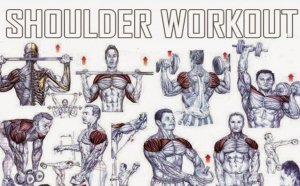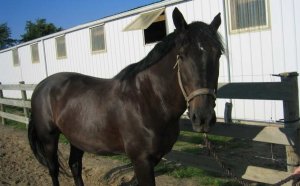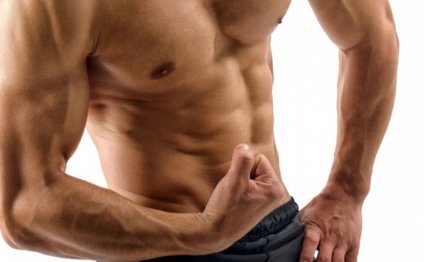
Forearm Workouts for mass
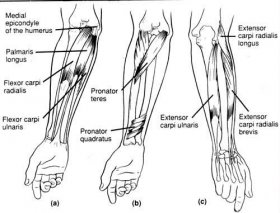
Safety Reasons, And Grip Strength
By strengthening the forearms, one can enhance their ability to engage in heavy lifting across all muscle groups. Often, the forearms can form a weak link which, in turn, limits the types of exercises one can do. For example, to fully develop the back, chins and bent rowing are fundamental prerequisites. Without a strong grip, using heavy weights with these exercises is next to impossible.
Indeed, increases in forearm strength will lead to upper-body strength gains overall, in that the lifter can safely make the transition to a heavier overall weight increase without fear of the forearms giving out on them mid-set. Thus, in this regard, effective forearm training leads to safer, more efficient, training sessions.
What Are The Best Exercises?
As mentioned, the forearms are comprised of several main muscles: the extensors, flexors and brachioradialis. For maximum results, it is best to train each of these with specific exercises. The following are an exhaustive range of exercises to target all aspects of the forearm complex.
The Wrist Extensors
As their name suggests, the extensors enable the hand to extend backward. The extensors are comprised of eight heads: the extensor digitorum, extensor carpi radialis longus, extensor carpi radialis brevis, extensor carpi ulnaris, extensor indicis, extensor digiti minimi, extensor pollicis longus, and the extensor pollicis brevis. These muscles run the outside length of the forearm and to develop them effectively a number of reverse grip movements need to be employed:
One of these exercises can be used for each forearm session. It is worthwhile alternating these movements (as with the following flexor and brachioradialis movements) from workout to workout for varieties sake, and to stimulate further gains. With each movement, turn wrists so palms of hands are facing down, and grip weight, keeping hands in this position.
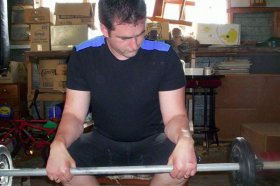 Rest inner forearms on knees and lower weight to get a full stretch. Then extend wrists to achieve a full contraction. Obviously with dumbbell curls this exercise will need to be completed unilaterally.
Rest inner forearms on knees and lower weight to get a full stretch. Then extend wrists to achieve a full contraction. Obviously with dumbbell curls this exercise will need to be completed unilaterally.
The Wrist Flexors
The flexors run the length of the inner forearm and are their most notable muscle in terms of size conveyance. The wrist flexors have six heads: the flexor digitorum superficialis, flexor digitorum profundus, flexor carpi radialis, flexor carpi ulnaris, palmaris longus, and the flexor pollicis longus. To target the wrist flexors employ:
To execute this movement, grip apparatus as one would prepare for a regular barbell curl. Rest extensors region on upper thigh/knee region with wrists bent forwards as far as possible. Squeeze forearms hard before returning to starting position.
Brachioradialis
The upper/outer portion of the forearm is the brachioradialis. It is the thick cord-like muscle that can be seen when the arm is fully straightened and only has one head (the brachioradialis itself). The brachioradialis can be targeted with:
Resist Wrist-strap Use
Wrist-straps will take the stress off the forearms and short-change the trainer in this area. In order to fully stimulate the forearms, they require maximal squeezing.
Straps compensate for a weak grip and it follows that they will negate any form of forearm stimulation, as they prevent optimal squeezing. Those with the strongest grips tend to have the biggest forearms.
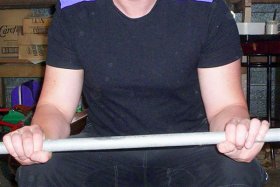 2. Use A Thick Bar (or one wrapped with a towel) When Training
2. Use A Thick Bar (or one wrapped with a towel) When Training
This will increase the difficulty associated with gripping the bar and will resultantly contribute to significant increases in forearm size.
3. Use A Wrist-curler
Essentially a wrist-curler is a heavy plate (which can vary in weight) attached to a small bar via a thin rope. To execute this movement, hold arms straight out in front whilst gripping the bar.
Slowly roll bar with one hand at a time until weight has been raised to shoulder height. Then unwind it and repeat, reversing the way in which the bar is rolled (change from working the flexors to the extensors).
Boxing
Repeatedly punching a boxing bag requires a tremendous amount of forearm strength and periodically structuring boxing sessions into ones routine may provide an edge when it comes to developing these muscles to their fullest.
Personally I have found that uppercutting the heavy bag with 50-punches, each arm, works wonders as far as developing the flexors goes.
Programs To Maximize Growth
As with all muscle groups, variation in forearm training can assist in forcing gains in muscle growth. With that in mind, mixing the above exercises around from session to session, rather than keeping with the same routine, should more effectively enhance growth.
When to train forearms is a different story: it is probably best to stick with the same session times each week - preferably at the end of biceps training and on a separate day, possibly with calves.
The following programs can be structured into ones routine at ones discretion (following biceps training and either on their own or with calves tends to work best) - but be sure to mix programs up to avoid boredom and further stimulate gains.
Program One
- Barbell Wrist Curls: 3 sets, 12-15 repetitions.
- Cable Reverse Curls: 3 sets, 12-15 repetitions.
- Dumbbell Hammer Curls: 3 sets, 12-15 repetitions.
Program Two
- Dumbbell Reverse Curls: 3 sets, 12-15 repetitions.
- Dumbbell Wrist Curls: 3 sets, 12-15 repetitions.
- Reverse Barbell Curls: 3 sets, 12-15 repetitions.
Program Three
- Reverse Barbell Wrist Curls: 3 sets, 12-15 repetitions.
- Cable Wrist Curls: 3 sets, 12-15 repetitions.
- Reverse Cable Preacher Curls: 3 sets, 12-15 repetitions.
Conclusion
Forearm training might be essential for a number of reasons: to convey an impression of power, promote complete physical development, strengthen the grip, and assist with strength training across all muscle groups. It is my hope that this article will have served to inspire those who desire physical excellence to attend to this, often neglected, muscle-group.
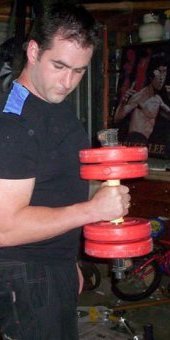
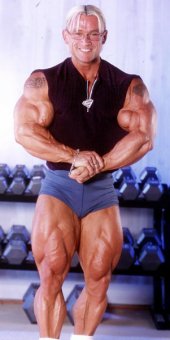
INTERESTING VIDEO
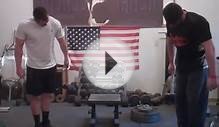
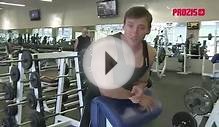
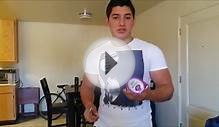
Share this Post
Related posts
Workouts for mass
I can t tell you how many times people have asked me for the best exercises to do in the gym to get big. Well, before I go…
Read MoreBest Arms Workouts for mass
When starting on a muscle-building program, one of the key body parts that many people want to place a large focus on are…
Read More